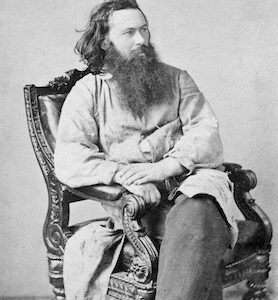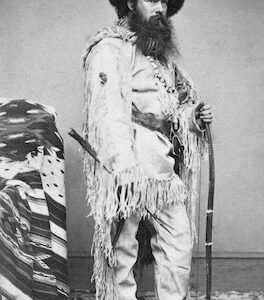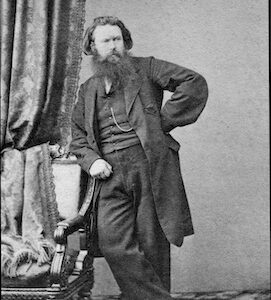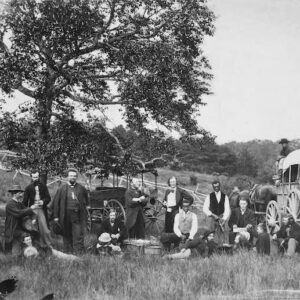Tag: Gardner (Alexander)
 Wikipedia says: Alexander Gardner (October 17, 1821 – December 10, 1882) was a Scottish photographer who immigrated to the United States in 1856, where he began to work full-time in that profession. He is best known for his photographs of the American Civil War, U.S. President Abraham Lincoln, and the execution of the conspirators to Lincoln’s assassination.
Wikipedia says: Alexander Gardner (October 17, 1821 – December 10, 1882) was a Scottish photographer who immigrated to the United States in 1856, where he began to work full-time in that profession. He is best known for his photographs of the American Civil War, U.S. President Abraham Lincoln, and the execution of the conspirators to Lincoln’s assassination.
…Abraham Lincoln became the American President in the November 1860 election and along with his election came the threat of war. Gardner was well-positioned in Washington, D.C. to document the pre-war events, and his popularity rose as a portrait photographer, capturing the visages of soldiers leaving for war.
Mathew Brady shared his idea with Gardner to photograph the Civil War. Gardner’s relationship with Allan Pinkerton (who was head of the intelligence operation that would become the Secret Service) was the key to communicating Brady’s ideas to Lincoln. Pinkerton recommended Gardner for the position of chief photographer under the jurisdiction of the U.S. Topographical Engineers. Following that short appointment, Gardner became a staff photographer under General George B. McClellan, commander of the Army of the Potomac. At this point, Gardner’s management of Brady’s gallery ended. The honorary rank of captain was bestowed upon Gardner, and he photographed the Battle of Antietam in September 1862, developing photos in his travelling darkroom. Gardner’s photography was so detailed that relatives could identify their loved ones by their facial features in his images.
Gardner’s work has often been misattributed to Brady, and despite his considerable output, historians have tended to give Gardner less than full recognition for his documentation of the Civil War. When Lincoln relieved McClellan from command of the Army of the Potomac in November 1862, Gardner’s role as chief army photographer diminished. About this time, Gardner ended his working relationship with Brady, probably in part because of Brady’s practice of attributing his employees’ work as “Photographed by Brady”. That winter, Gardner followed General Ambrose Burnside, photographing the Battle of Fredericksburg. Next, he followed General Joseph Hooker. In May 1863, Gardner and his brother James opened their own studio in Washington, D.C., hiring many of Brady’s former staff. Gardner photographed the Battle of Gettysburg (July 1863) and the Siege of Petersburg (June 1864–April 1865) during this time.
In 1866, Gardner published a two-volume work, Gardner’s Photographic Sketch Book of the Civil War. Each volume contained 50 hand-mounted original prints. The book did not sell well. Not all photographs were Gardner’s; he credited the negative producer and the positive print printer. As the employer, Gardner owned the work produced, as with any modern-day studio. The sketchbook contained work by Timothy H. O’Sullivan, James F. Gibson, John Reekie, William Pywell, James Gardner (his brother), John Wood, George N. Barnard, David Knox and David Woodbury, among others. Some of his photographs of Lincoln were considered to be the last taken of the President, four days before his assassination, although later this claim was found to be incorrect; the pictures were actually taken in February 1865, the last one on February 5. Gardner would photograph Lincoln on a total of seven occasions while Lincoln was alive. He also documented Lincoln’s funeral, and photographed the conspirators involved (with John Wilkes Booth) in Lincoln’s assassination. Gardner was the only photographer allowed at their execution by hanging, photographs of which would later be translated into woodcuts for publication in Harper’s Weekly.



